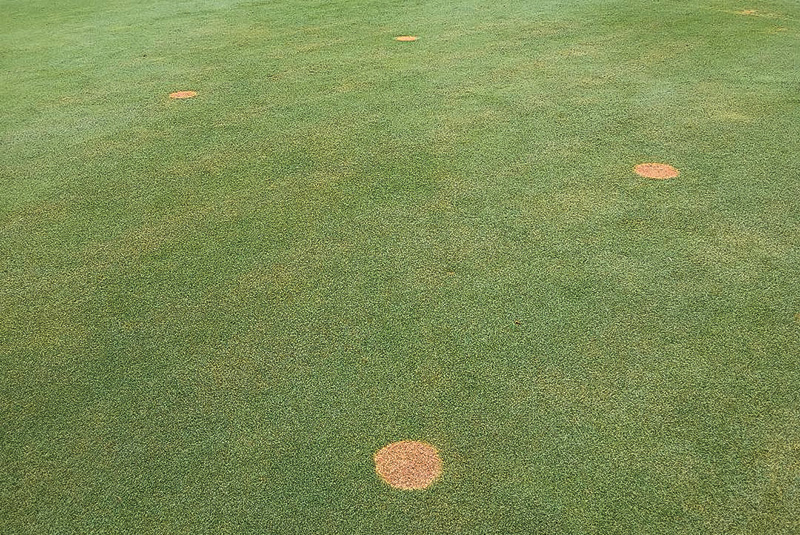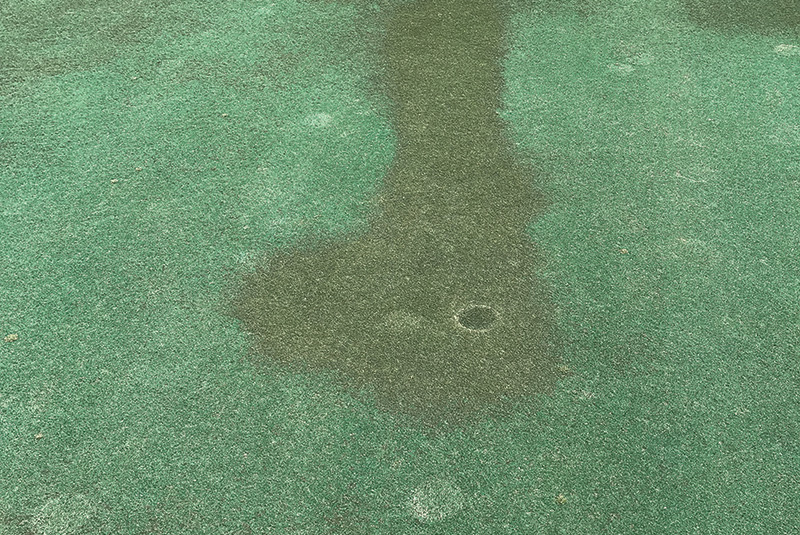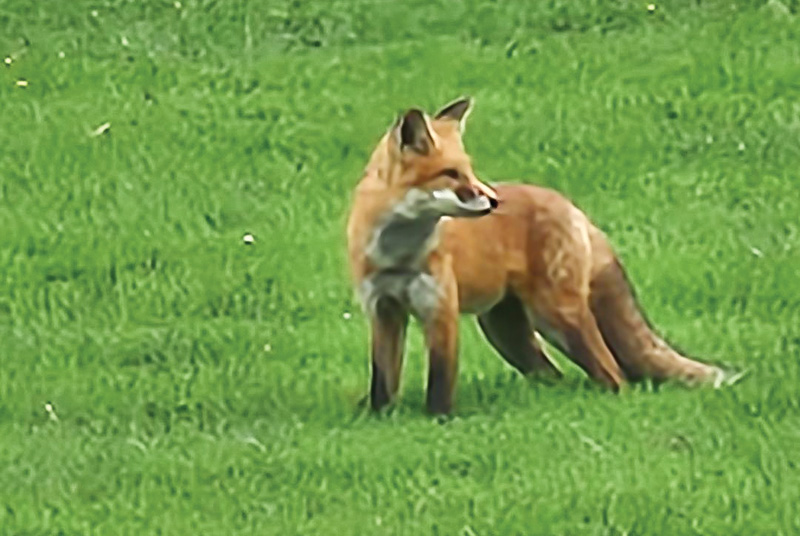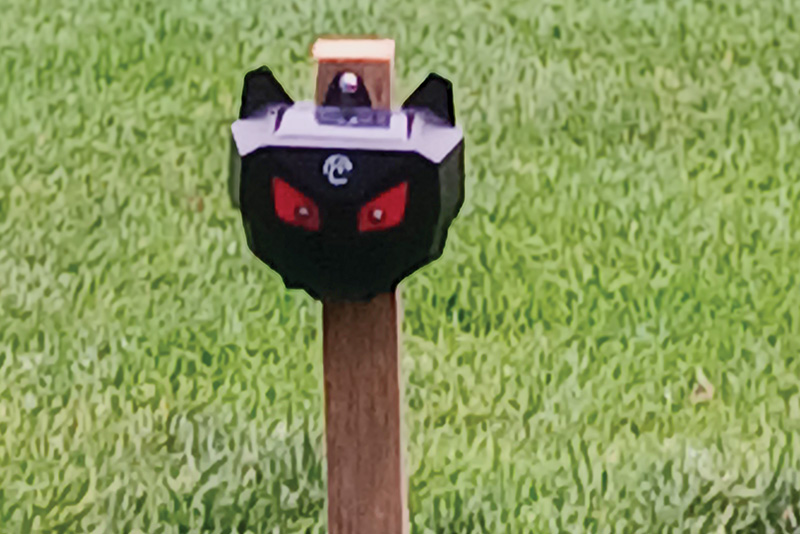Problem A: Multiple circular brown spots on turf

Location: Smethport, Pa.
Turfgrass area: Putting green
Turfgrass variety: Bentgrass/Poa annua
Problem B: Irregular-shaped area of nondormant turf after freeze

Location: Dallas
Turfgrass area: Putting green
Turfgrass variety: Dwarf-type bermudagrass
Scroll down for answers.


Problem A: Multiple circular brown spots on turf
These circular brown spots that appeared on this golf green stumped the superintendent, who has been on golf courses for 40 years. One morning, he noticed a brown spot in a perfect circle on one of his greens. His first thought was it was the result of an old pin placement, but there hadn’t been a pin in that area for quite some time. The following day, there was another spot, and he was perplexed. The next night, his assistant, who lives on the course close to that green, was sitting on his porch, and he saw a red fox come out of the brush, go out on that green and urinate. The next morning, a new spot was just starting to go off color. The superintendent flushed it with water, and it seemed to ease the symptoms. This past spring, a mother fox had three pups under a big rock behind the course’s maintenance shed, and this fox family seems to be the culprit. A box trap has not worked, so the crew purchased a couple of solar animal repellers pictured here. The superintendent saw footprints in the dew one morning that went around the repellers to enter the green, and the course had not had new damage for the past week.
Photo submitted by Jim Askey, golf course superintendent at Smethport Country Club in Smethport, Pa.

Problem B: Irregular-shaped area of nondormant turf after freeze
This irregular-shaped area of nondormant turf in the Dallas area occurred just after a freeze during a particularly harsh winter and spring in that region. In fact, the area went to minus 2 degrees Fahrenheit during this particular storm and stayed in the 20s for more than a week. Much of the bermudagrass in the area was damaged. Because this course was going to be hosting a major tournament in the fall, most of the greens were covered, and the turf survived. This picture from a covered green shows a green area in the shape of a flag and pole. This is where the flag was laid under the cover. Much of the turf even under the cover was set back, but where the flag lifted the cover just a little, it created a mini greenhouse which allowed the turf to remain viable. The greens fully recovered by July, about three months after warm temperatures arrived. Many fairways also had significant damage to the point a couple areas had to be sprigged, but everything was beautiful for the September tournament.
Photo submitted by John Miller, CGCS, agronomist for the LPGA and 43-year GCSAA member.
Editor’s note: Have a photo of an on-course anomaly? GCM would love to have a look! Email it to Photo Quiz author John Mascaro.
John Mascaro is the president of Turf-Tec International.